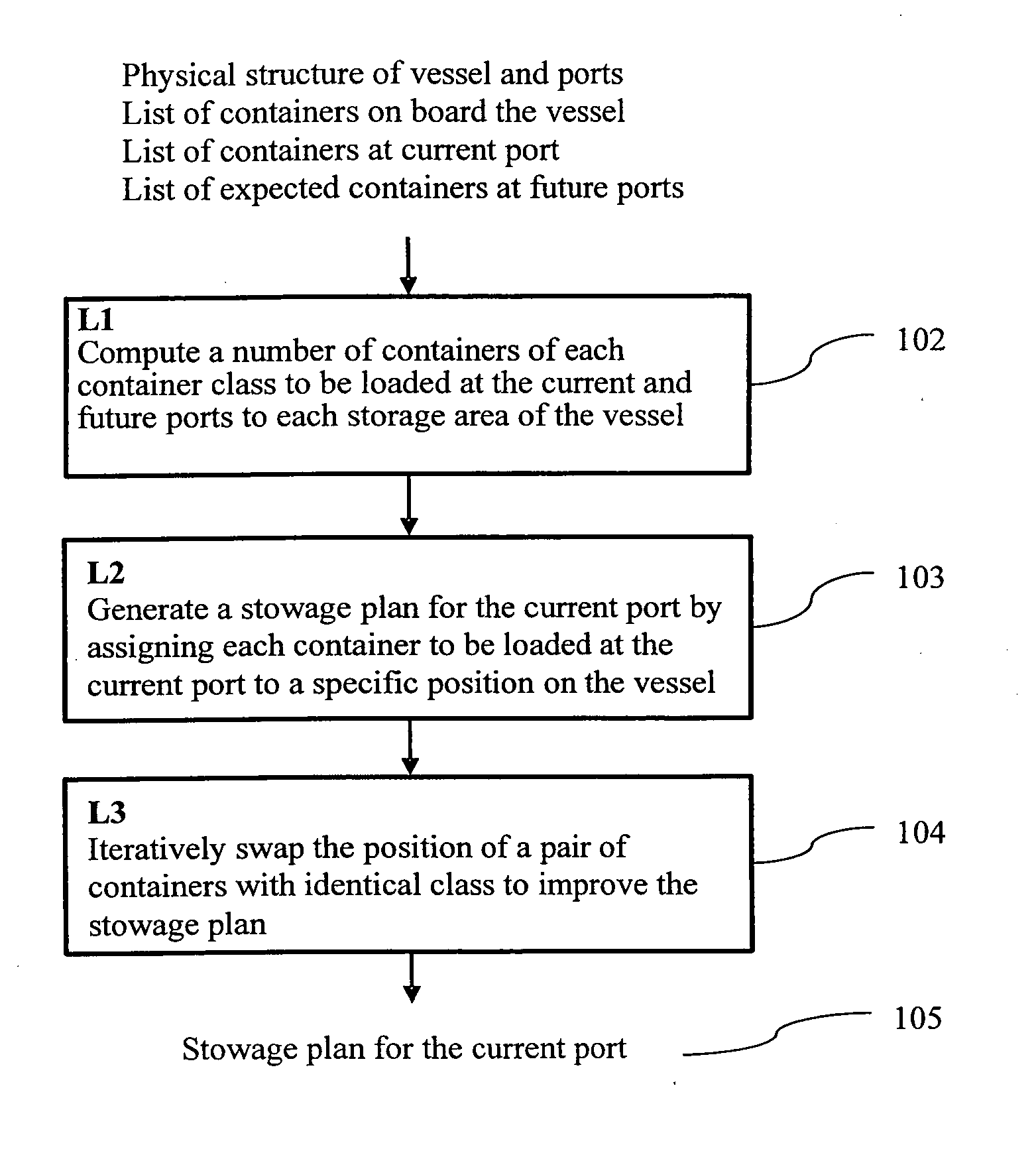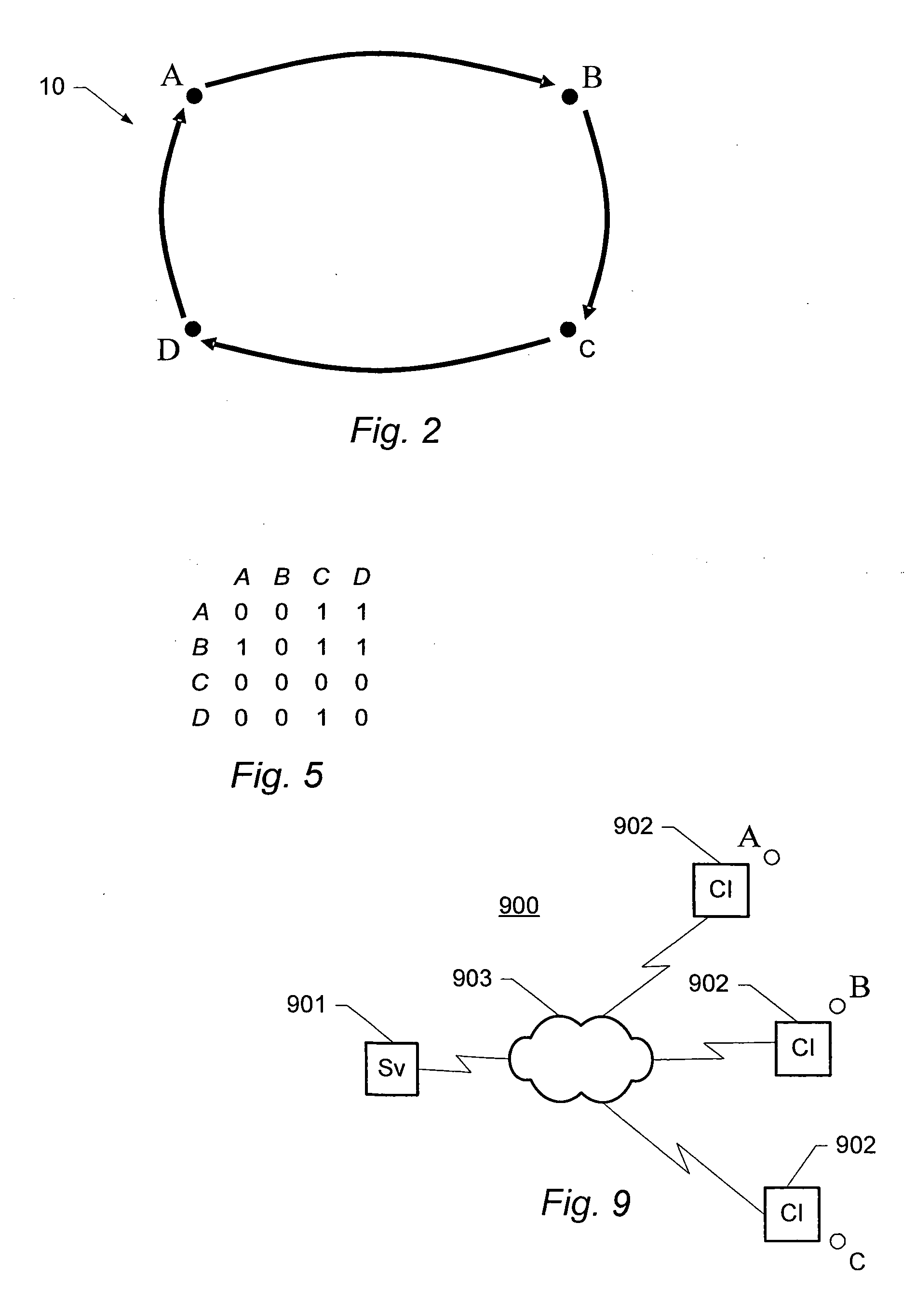Container vessel stowage planning
- Summary
- Abstract
- Description
- Claims
- Application Information
AI Technical Summary
Benefits of technology
Problems solved by technology
Method used
Image
Examples
Embodiment Construction
[0065]FIG. 1 schematically illustrates an example of storage areas and cargo item positions on a vessel. A container vessel 1 typically includes of a number of bays 2 where single rows of 40′ or 45′ containers or double rows of 20′ containers can be stacked (these may be referred to as 20′ and 40′ bays, respectively). For example, position 4 can hold a single 40′ or 45′ container or two 20′ containers as illustrated by reference numerals 4a and 4b. FIG. 1a shows a typical numbering of the container stacks in the bays where even numbers are used for 40′ bays while odd numbers are used for 20′ bays. A number of hatch covers 3a-c divide the bays into under and over deck positions. FIG. 1b shows a schematic view of an example of the positions of a bay 2. This example assumes that there are three hatch covers 3a-c: one in the centre 3b and one in each side. It will be understood, however, that the number and arrangement of hatch covers may vary from vessel to vessel. Each level of contai...
PUM
 Login to View More
Login to View More Abstract
Description
Claims
Application Information
 Login to View More
Login to View More - R&D
- Intellectual Property
- Life Sciences
- Materials
- Tech Scout
- Unparalleled Data Quality
- Higher Quality Content
- 60% Fewer Hallucinations
Browse by: Latest US Patents, China's latest patents, Technical Efficacy Thesaurus, Application Domain, Technology Topic, Popular Technical Reports.
© 2025 PatSnap. All rights reserved.Legal|Privacy policy|Modern Slavery Act Transparency Statement|Sitemap|About US| Contact US: help@patsnap.com



